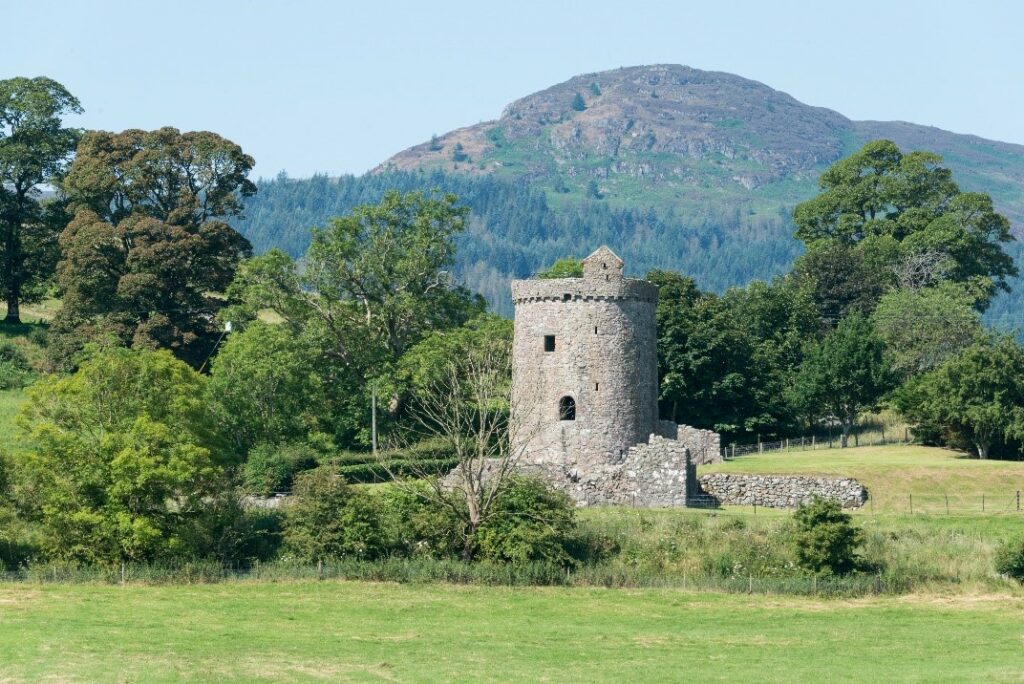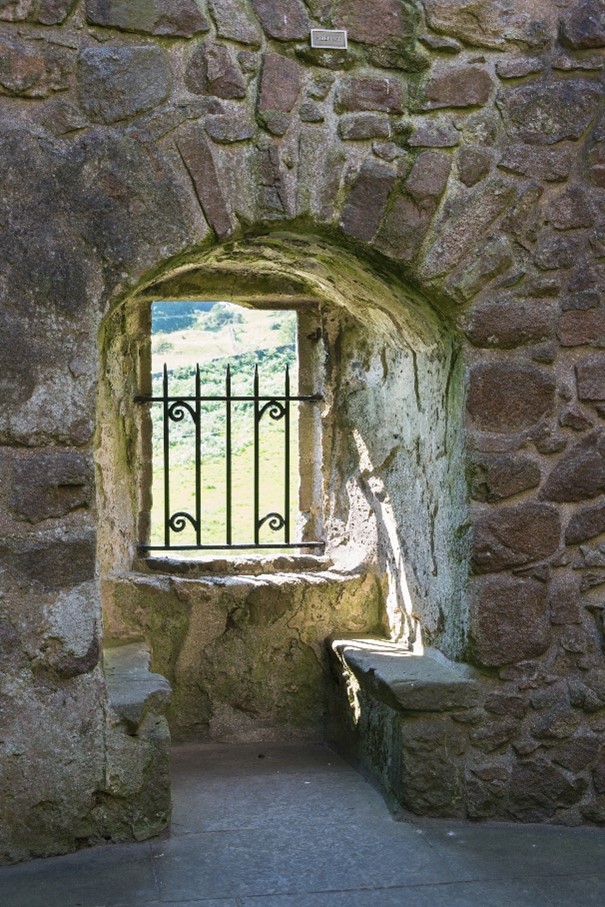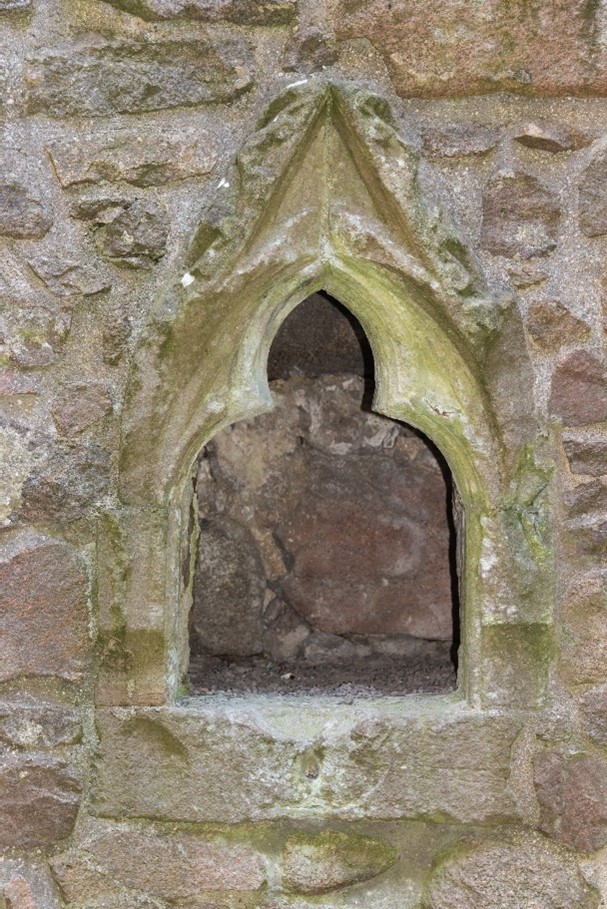If you’re looking for a free-standing round tower, you’re in luck because we look after Scotland’s only one, Orchardton Tower.
So, what’s the story behind it?
A fateful backing
In the 1450s, the Cairns family served as gentleman-servants for the Stewart royal dynasty and the house of Douglas.
John Cairns held the land of ‘Erysbutil’, which can be identified as modern-day Orchardton, in exchange for an annual rent of £6 to the Earl of Douglas.
But in 1455, his fate changed when John Cairns chose to back King James II over the Earl. He was rewarded by being positioned as a laird, and his rent was reduced to one penny!
It was during his time as a laird that we assume John Cairns commissioned Orchardton Tower.
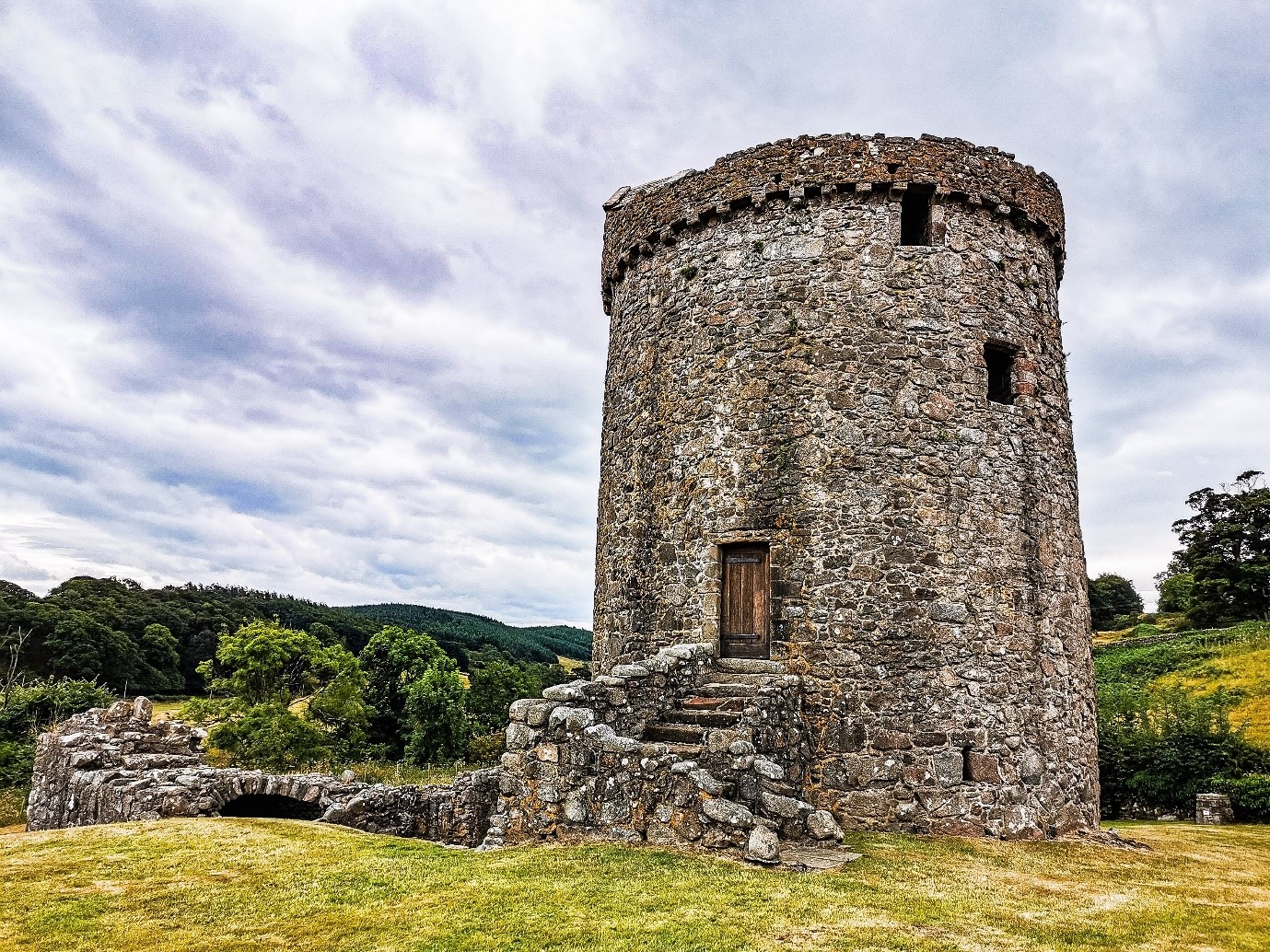
The first mention of Orchardton
The first time we hear of Orchardton, rather than Erysbutil, is in 1469 when John Cairns is recorded as laird of Orchardton.
The name may suggest the existence of a nearby orchard. Though historically similar spellings have also been used for the various places now called Urquhart – the latest scholarship regards these as sharing the same Celtic derivation, meaning ‘settlement beside a small wood’.
Enter the Maxwells
The lairdship was split between three sisters – Margaret, Janet and Elizabeth – in 1558, resulting in a complex partition where each piece of ground was divided.
In 1616, a local man and brother of Lord Herries, Sir Robert Maxwell, gradually began to buy these pieces. By 1640, he completed the reunification and claimed the lairdship for himself! His son later became a baronet in 1663.
A romantic ending?
During his childhood, Sir Robert Maxwell, seventh Baronet of Orchardton, was sent to a seminary in France. Sources have said that he was sent away so that his uncle could take over the estates, by letting other people assume that Robert was dead.
By 1746, the seventh aronet returned from exile in France and fought against the British crown as a Jacobite officer at the battles of Fontenoy and Culloden.
Sir Robert Maxwell returned to Galloway as an outlaw. Due to his French commission, he was granted the status of prisoner of war rather than a rebel, escaping him from execution.
Later in the 18th century, it was said that in a stroke of luck, by a mark on his skin he was recognised by his childhood nurse! His high status was recognised, and he was swiftly released.
… but what of the tower?
The seventh Baronet regained his inheritance and built a new mansion close to the old tower. The mansion was largely demolished and replaced in 1881 by the present Orchardton House.
And we’re not the only ones who think this story romantic; in 1815, Walter Scott published the novel, Guy Mannering, or the Astrologer, loosely based on the figure of Sir Robert Maxwell, seventh Baronet of Orchardton.
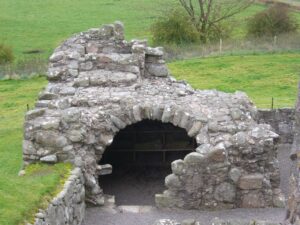
Vault with carved stones at Orchardton Tower.
A circle of theories
Understanding John Cairns’ unusual decision to build a round tower house has prompted many theories.
One 19th-century antiquary declared it ‘a fine specimen of the Danish Rath’. Alternatively, Victorian Novelist S.R. Crockett had one character refer to it as ‘the Old Pict’s Tower of Orchardton’.
More recent theories say that the closest parallels to Orchardton’s circular shape can be found in South-West Ireland. Most southern Marcher lords in the 15th century had trade connections in the north Irish Sea area, so they would likely know of towers such as Dundrum and recognised their demonstration of power to port traders. Could this have been an inspiration for Cairns?
Or closer to home, Edinburgh and Bothwell castle both host notable circular residential towers. Some have thought that the Cairns family may have looked to this prestigious medieval architecture when considering their own tower. Borrowing a feature normally associated with royalty would only have helped the family’s reputation.
Or perhaps the simplest theory – just as we today want to stand out and be unique, maybe John Cairns had the same idea.
With Orchardton Tower being the only round tower house currently in Scotland, if that was his intention he certainly succeeded.
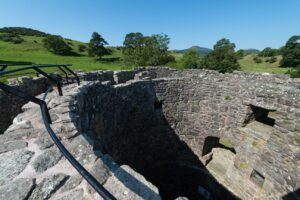
Walkway round the exterior of Orchardton Tower.
Orchardton Tower today
In 1912, the tower was taken into state care alongside MacLellan’s Castle, another Kirkcudbrightshire residence owned by the seventh baronet of Orchardton.
With its well-preserved medieval layout, the tower is a valuable resource for understanding the nature of lordly residences in this period of history.
We still don’t know why Cairns made the unusual decision to build a circular tower. But what we do know is that if you’re looking for a glimpse at the mystery of Scotland’s only round tower house, then Orchardton Tower is the place for you.
Enjoyed this blog? From the Women’s Suffrage Movement to the history of doocots, explore our full collection.

